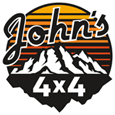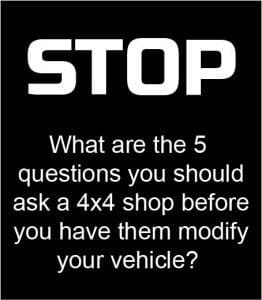Process & Policies: Vehicle Inspections
| Process / Policy: | Inspections |
| Date Last Updated: | 1/1/19 |
| Last Author: | Simons,Hurst |
Objective (the why):
- Safety - first and foremost, ensure our customers are operating a safe vehicle.
- Create value for our customer - they know if they bring it to John’s 4x4 they are confident we will inspect their vehicle and identify issues and recommendations, prioritize them, and help the customer make the right decision for their situation, urgency, and budget.
- Integrity and Sweating the Details - we perform inspections by living two of our core values. We do not create problems and recommendations unethically and we look at every detail we can on a vehicle. The little things make the difference.
- Improve John’s 4x4 revenue opportunity - we provide a valuable and critical service; we should be rewarded for that value.
Issue or outcomes if we don’t follow process or policy:
- A customer experiences a critical or minor event with their vehicle after bringing it to John’s 4x4. They take it to the nearest repair shop and realize it could have been avoided if we had performed a thorough inspection. Net result? We lost that customer’s trust.
Process or Policy:
- General guidelines:
- All inspections should be done first thing (as early in the AM as possible) before any other work on the vehicle is performed. This gives us time to build the estimate and have the service advisor review with customer by mid day. This, in turn, gives us an opportunity to get approval, order parts, and address all or majority of work in the afternoon (depending on scope).
- Inspections will leverage one of the two flat racks as often as possible. They are faster to get the vehicle in the air to begin inspection. Productivity is key.
- Pre-lift inspections have a few variances/additional items that need to be performed - see process below.
- Inspections are a perfect opportunity to tell a story about the vehicle and to capture pictures of any issues found, as well as pictures of things that are critical, but in good shape. Not all pictures are bad! Remember to put yourself in the customer’s shoes.
- The execution of an inspection is reliant on the checklist provided with repair order. The following provides recommendations on productivity, specifics by category, and expected time to complete.
- As stated above all diag’s and inspections need to be done prior to any work performed except oil changes and tire rotations
- Not every vehicle needs to be test driven, pre lift, Pre purchase inspections, and customer concern vehicles should be driven prior to pulling into shop if safe to do so.
- While pulling vehicle into bay check for dash warning lights and operation of various items ie: wipers, windows ect.
- Start with light check, while walking around vehicle set rack on vehicle to increase productivity
- Check steering, suspension components on ground for accuracy
- Automatic transmission fluid is checked while vehicle is running either in P or N
- All fluids are topped off and noted on RO of amount needed and inspection or pressure tests recommended
- Mileage recommendations are key to improve ARO
- Pre purchase inspections include wheel off brake inspection with measurements of pads, shoes, and rotor measurements, regular courtesy inspections do not remove wheels
- Times expected to complete inspections are as follows: Standard inspection 15-30 min. Oil change no inspection 20-30 min. Oil change courtesy 30-45 min. Oil change courtesy and tire rotation/ Oil change and wheel off brake inspection 45-60 min.
- Have vehicle ready to go in case of customer decline.
Primary Role: Technician
Secondary Role(s): SA

